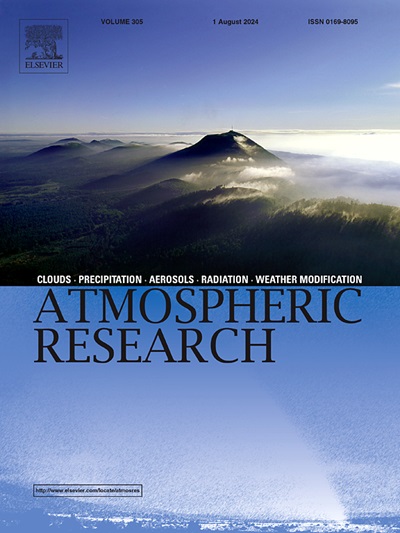Satellite-based extreme precipitation estimation using convolution neural networks and ant colony optimized multi-layers perceptron
IF 4.5
2区 地球科学
Q1 METEOROLOGY & ATMOSPHERIC SCIENCES
引用次数: 0
Abstract
Extreme precipitation events have recently increased due to global warming, leading to higher humidity and temperatures. Therefore, accurate, updated, and comprehensive precipitation estimations are essential to mitigate the severe losses caused by these extreme events. Satellite precipitation products provide high spatiotemporal resolution and global coverage, enabling improved detection and estimation of precipitation, especially in areas with limited ground observations. This research leverages some of the advanced satellite precipitation products and atmospheric dataset reanalysis available, enhancing the accuracy of precipitation estimates, particularly during heavy and extreme precipitation events. In this work, we use Convolutional Neural Networks (CNN) and optimization techniques to introduce a two-step methodology for improving satellite-based estimation and detection of heavy and extreme precipitation events. In the first step, feature centroids are integrated into a resampling method to increase the diversity of samples. The second step applies the Ant Colony Optimization (ACO) algorithm to refine categorical evaluation criteria, enhancing prediction accuracy. This study uses the ACO meta-heuristic algorithm to optimize a Multi-Layer Perceptron (MLP) model, using CNN-based precipitation estimates as input. The performance of the models and products in estimating and detecting heavy and extreme precipitation events is evaluated using various metrics, including Pearson correlation (r) and Kling-Gupta Efficiency (KGE). The results show that the Ant Colony-optimized MLP (ACO-MLP) outperforms the satellite precipitation products and CNN models in estimating the extreme and heavy precipitation with r = 0.89, 0.82, and KGE = 0.71, 0.65, over the continental area of Australia. The result of utilizing the proposed ACO-MLP and CNN models in Australia showed that the spatial pattern of the extreme precipitation event over the country's east coast on 23 February 2022 is effectively captured. This work contributes to improving water resources management and advancing climate studies, particularly in understanding and addressing extreme precipitation conditions.

求助全文
约1分钟内获得全文
求助全文
来源期刊

Atmospheric Research
地学-气象与大气科学
CiteScore
9.40
自引率
10.90%
发文量
460
审稿时长
47 days
期刊介绍:
The journal publishes scientific papers (research papers, review articles, letters and notes) dealing with the part of the atmosphere where meteorological events occur. Attention is given to all processes extending from the earth surface to the tropopause, but special emphasis continues to be devoted to the physics of clouds, mesoscale meteorology and air pollution, i.e. atmospheric aerosols; microphysical processes; cloud dynamics and thermodynamics; numerical simulation, climatology, climate change and weather modification.
 求助内容:
求助内容: 应助结果提醒方式:
应助结果提醒方式:


